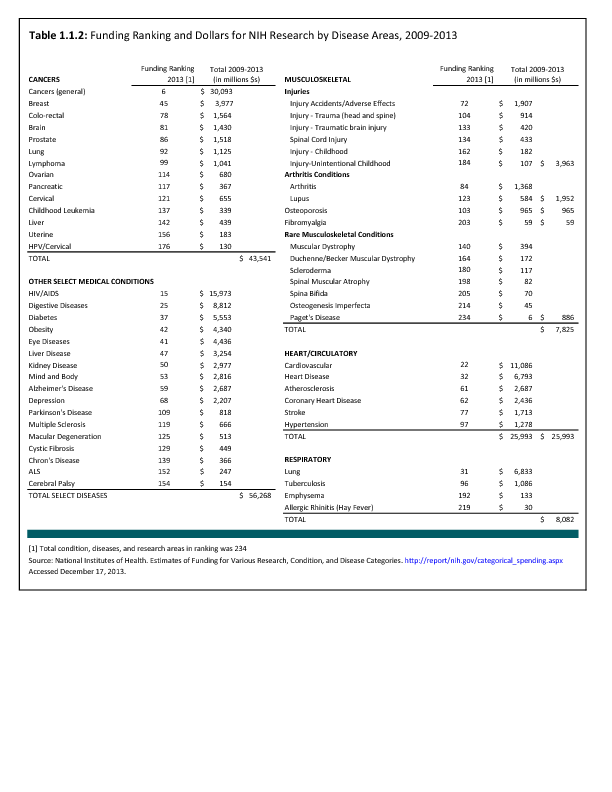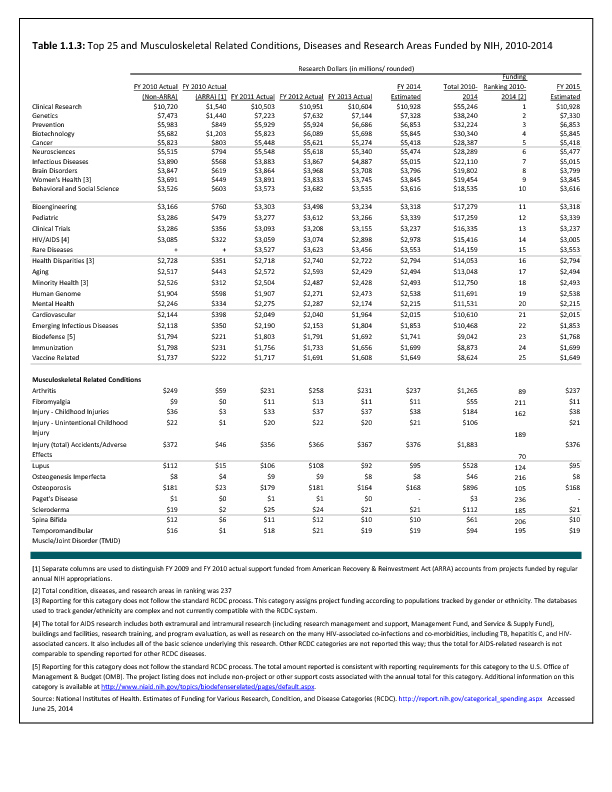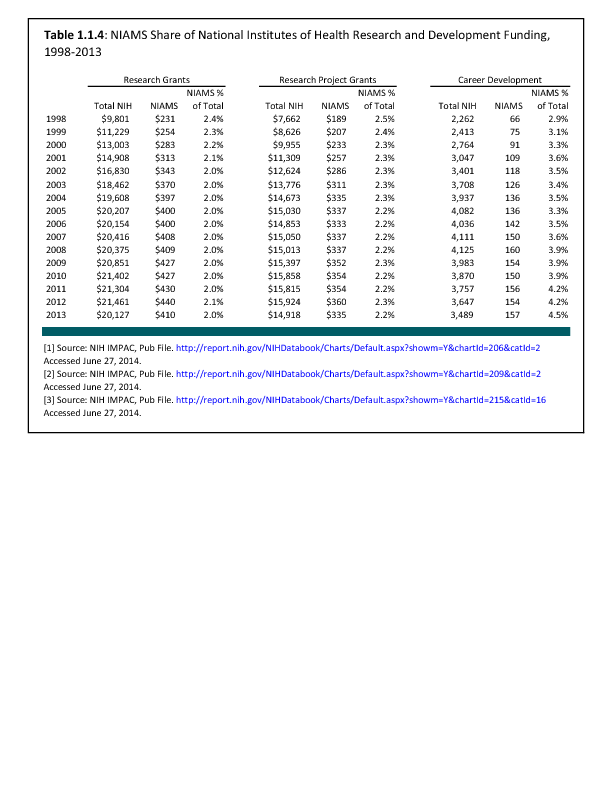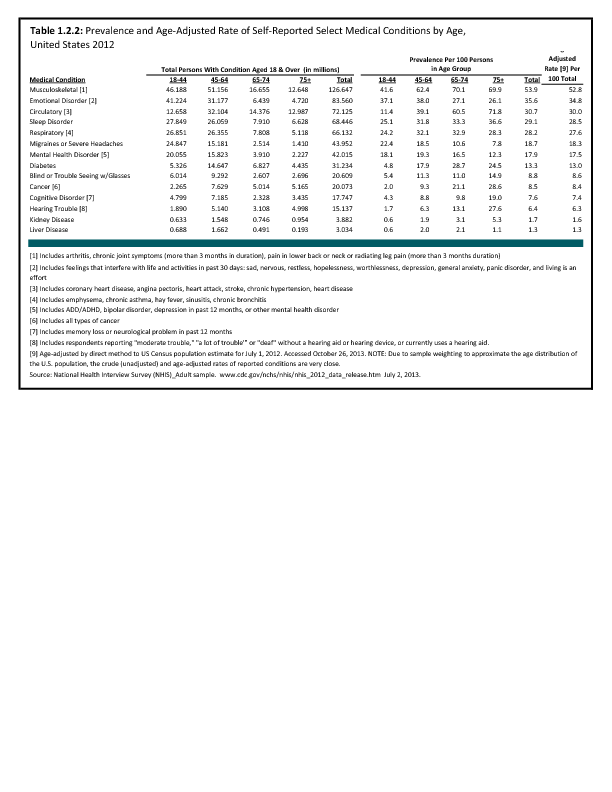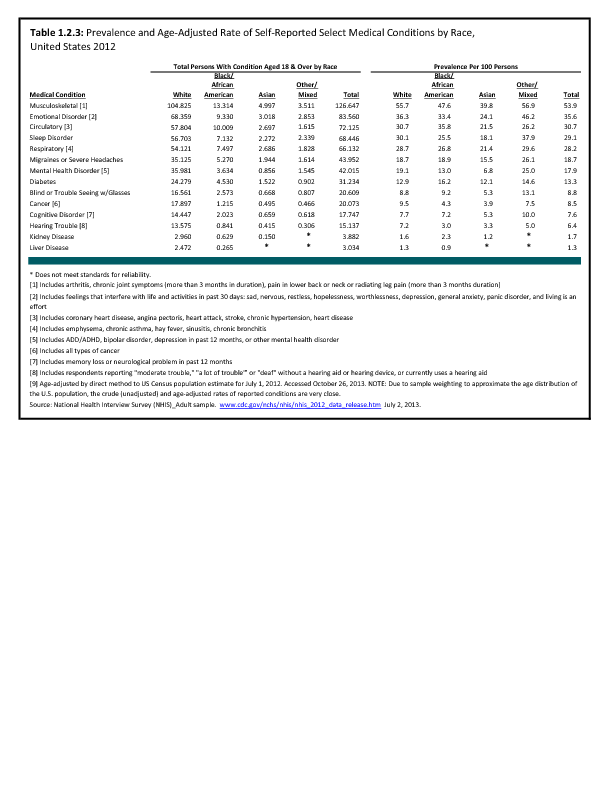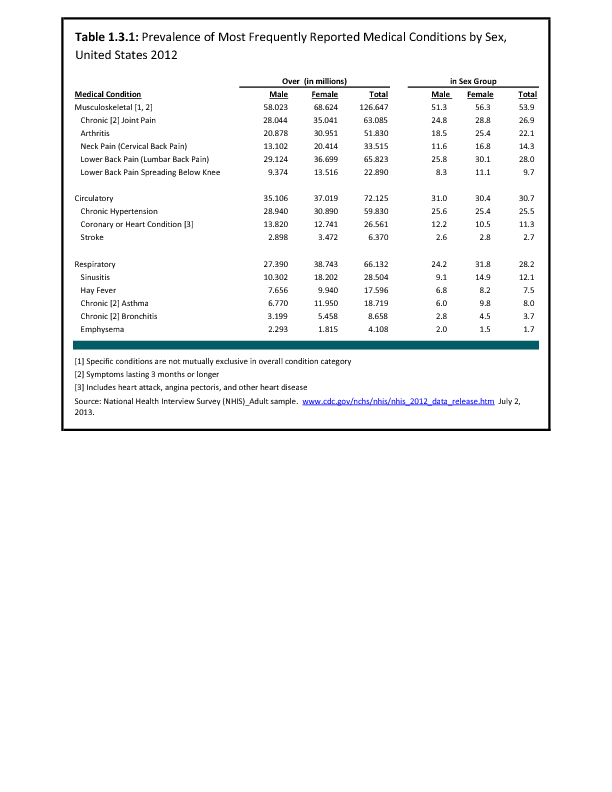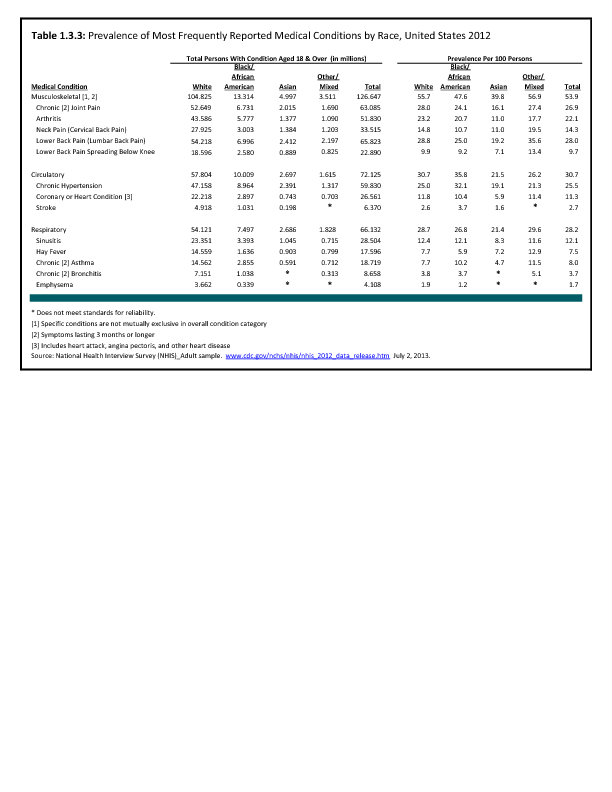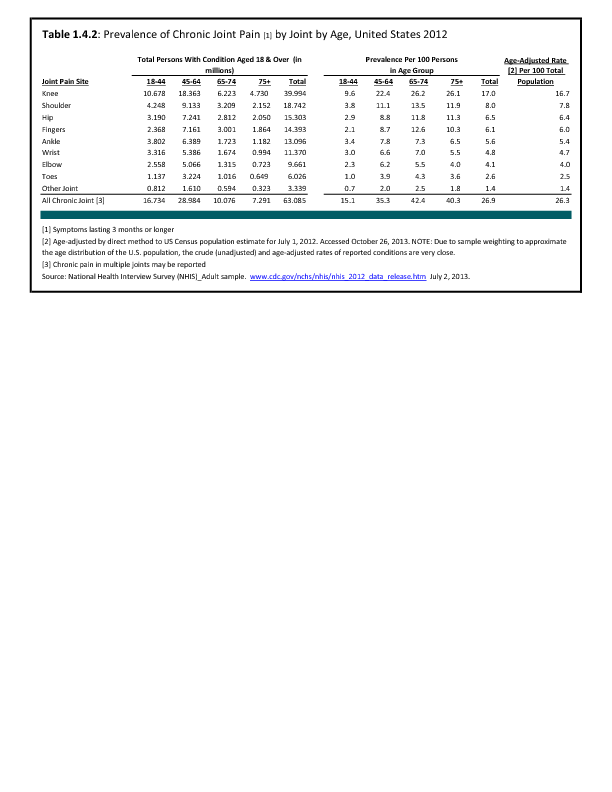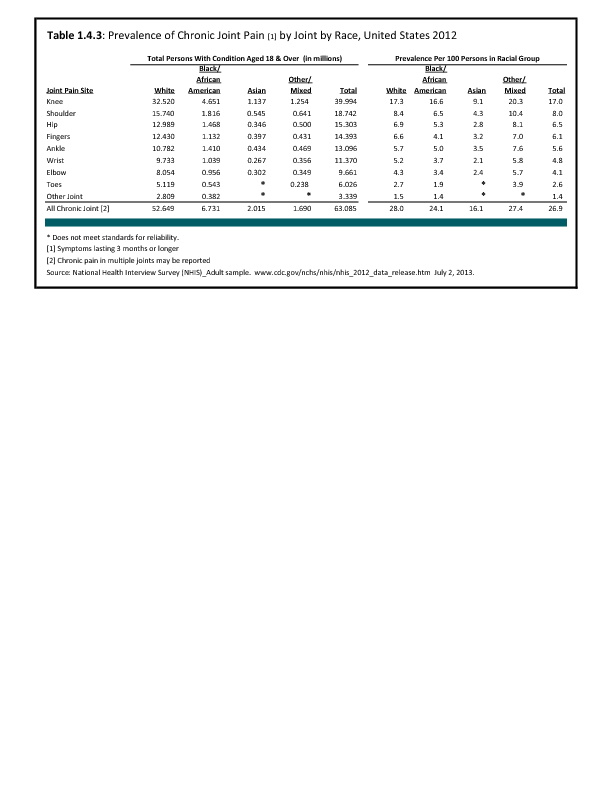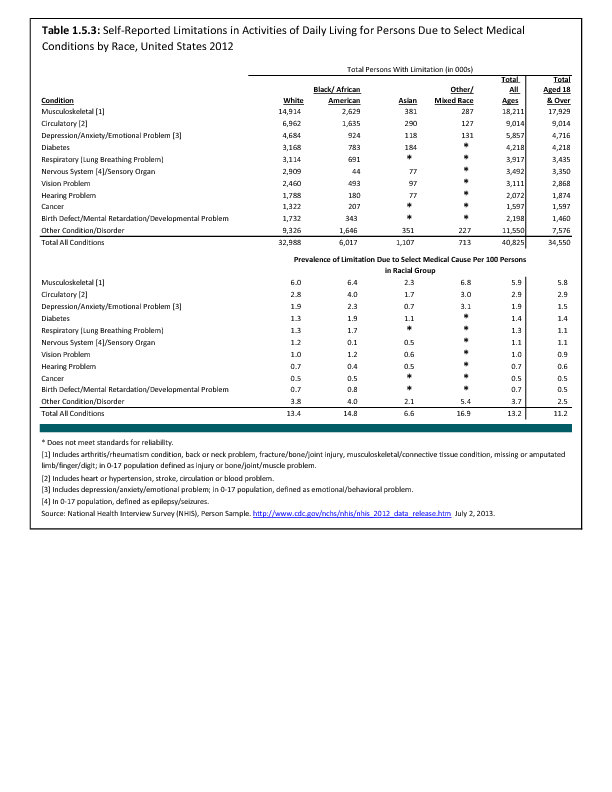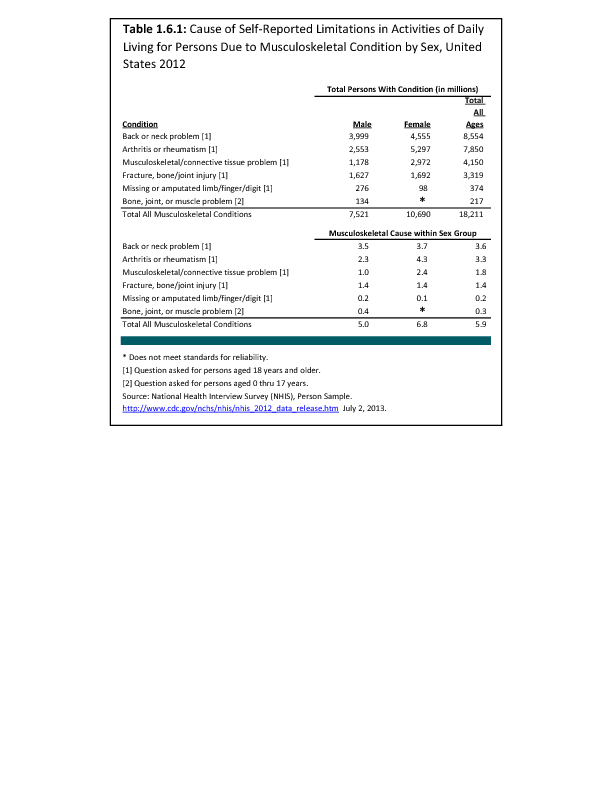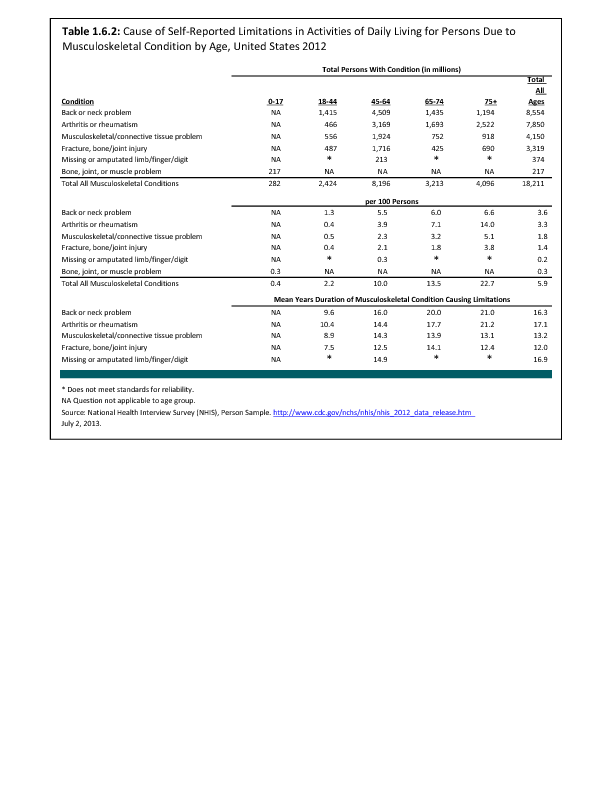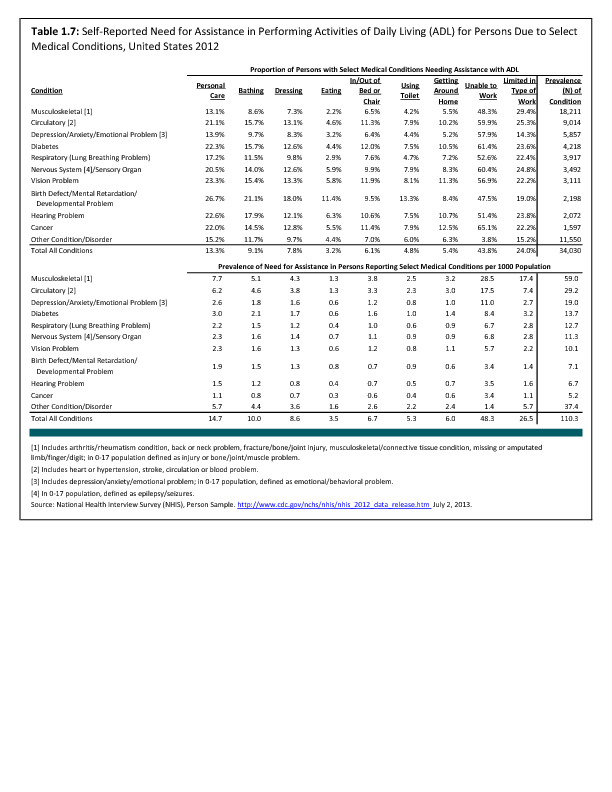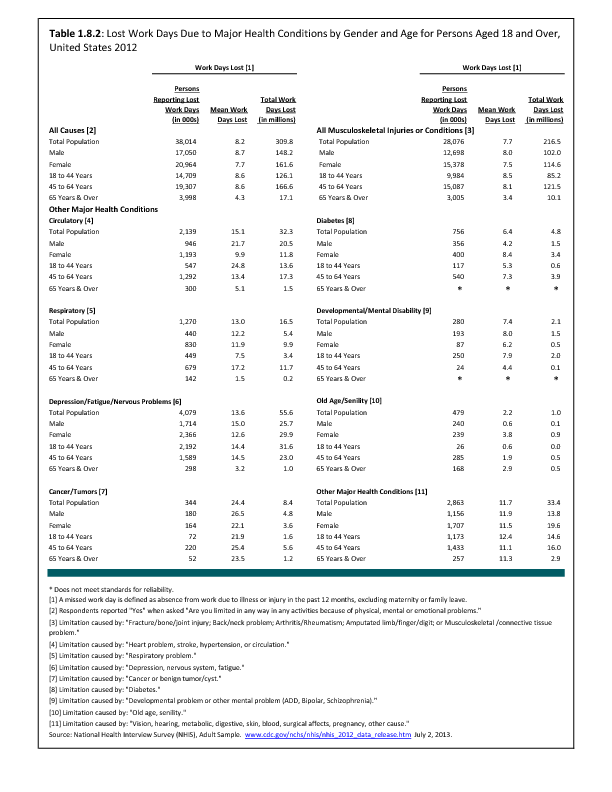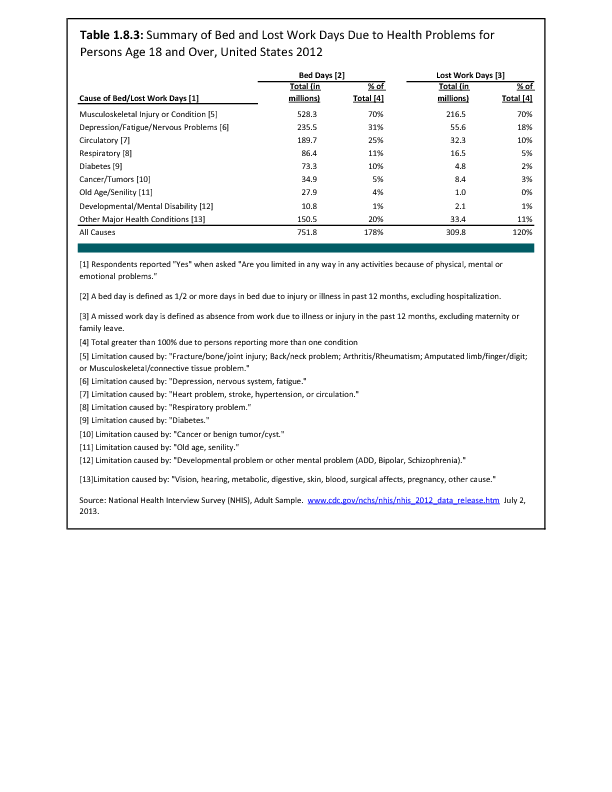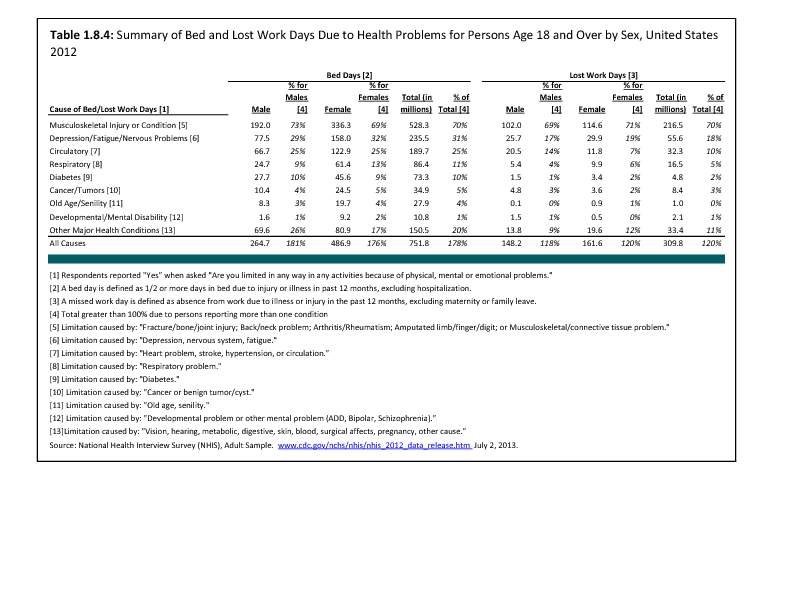Musculoskeletal Diseases
I.F.0
The annual average proportion of the US population with a musculoskeletal condition requiring medical care has increased by more than five percentage points over the past decade and now constitutes more than 33% of the population. This is an overall rate of increase of 19%. The majority of growth in both the proportion of the population, and in the number of people, with a musculoskeletal condition is in the 45 to 64-year age bracket, with persons age 65 years and older with musculoskeletal conditions also rising. (Reference Table 10.1 PDF CSV and Table 10.1.1 PDF CSV)
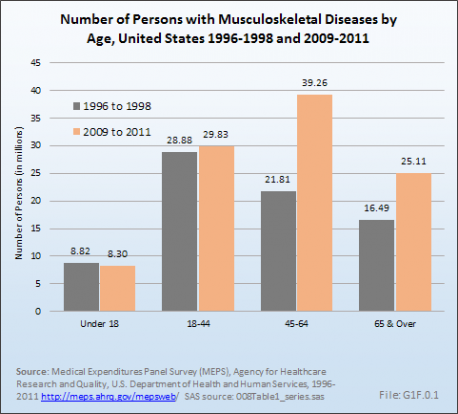
The annual estimated direct and indirect cost attributable to persons with a musculoskeletal disease is $213 billion. Taking into account all costs for persons with a musculoskeletal disease including other comorbid conditions, the cost of treating these individuals and the cost to society in the form of decreased wages is estimated to currently be nearly $874 billion per year. Over the last 15 years, costs associated with musculoskeletal conditions have risen from 3.43% of the GDP to 5.73%. (Reference Table 10.10 PDF CSV and Table 10.14 PDF CSV)
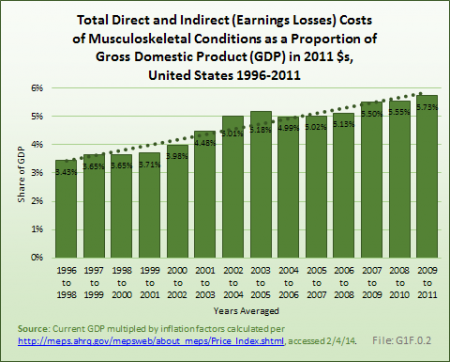
Treatments that mitigate the long-term impacts of musculoskeletal conditions and return persons to full and active lives are needed.

The annual estimated direct and indirect cost attributable to persons with a musculoskeletal disease is $213 billion. Taking into account all costs for persons with a musculoskeletal disease including other comorbid conditions, the cost of treating these individuals and the cost to society in the form of decreased wages is estimated to currently be nearly $874 billion per year. Over the last 15 years, costs associated with musculoskeletal conditions have risen from 3.43% of the GDP to 5.73%. (Reference Table 10.10 PDF CSV and Table 10.14 PDF CSV)

Treatments that mitigate the long-term impacts of musculoskeletal conditions and return persons to full and active lives are needed.
Edition:
- 2014



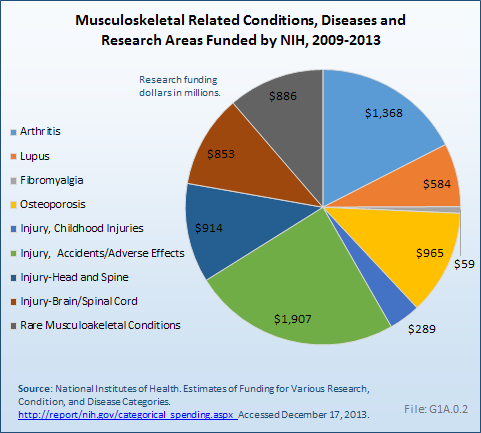
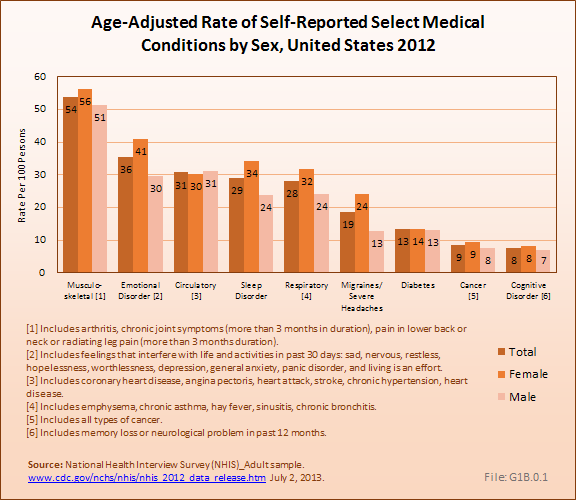
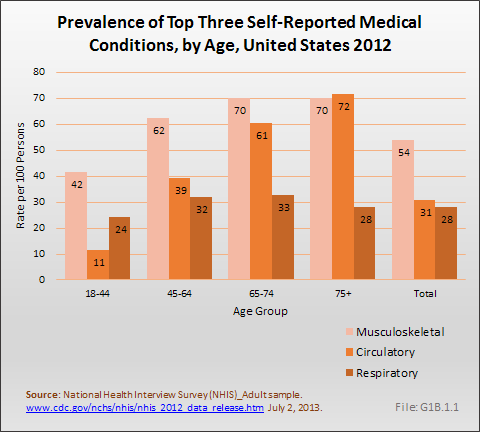
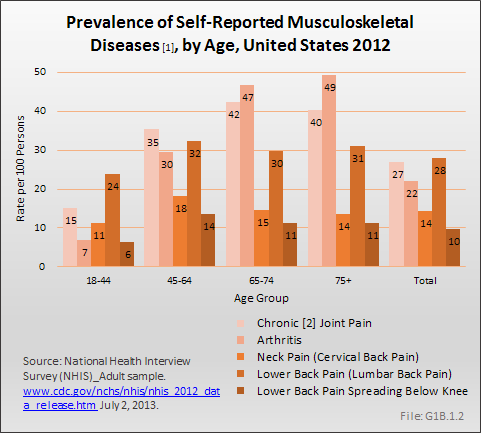
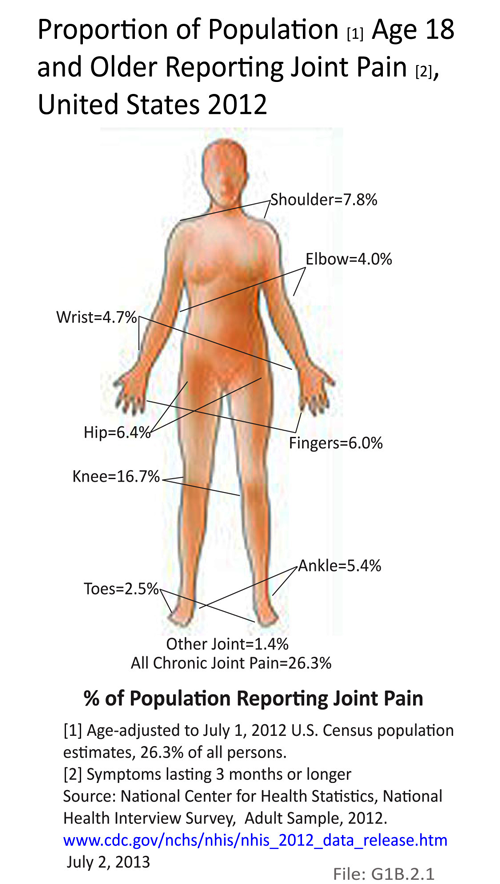
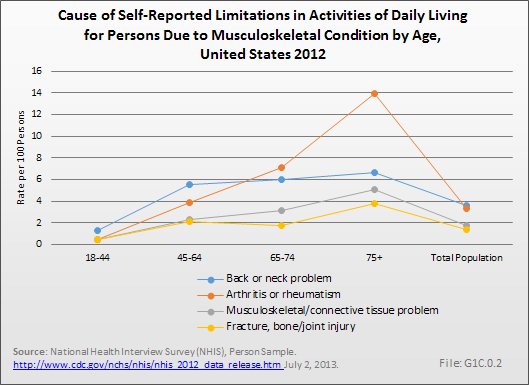
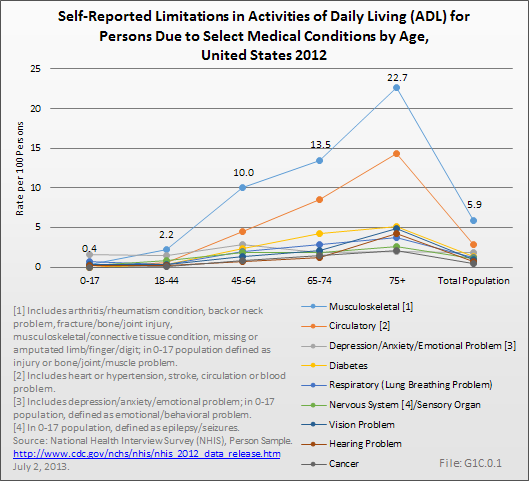

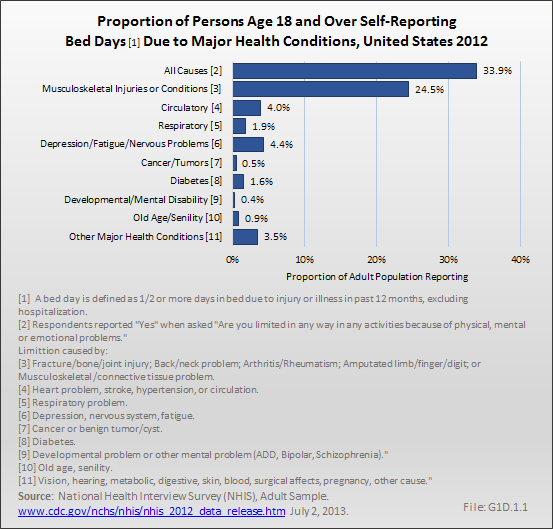
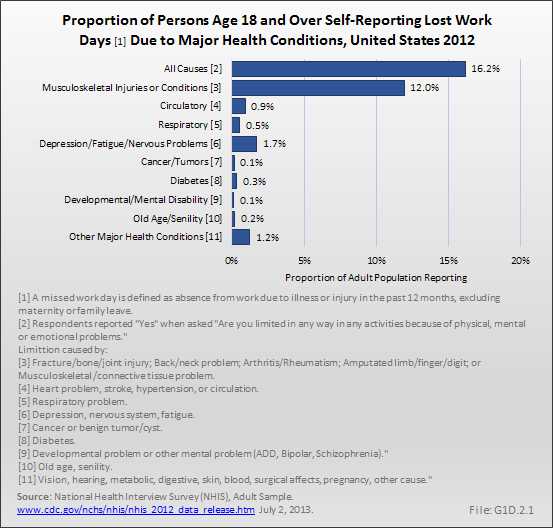
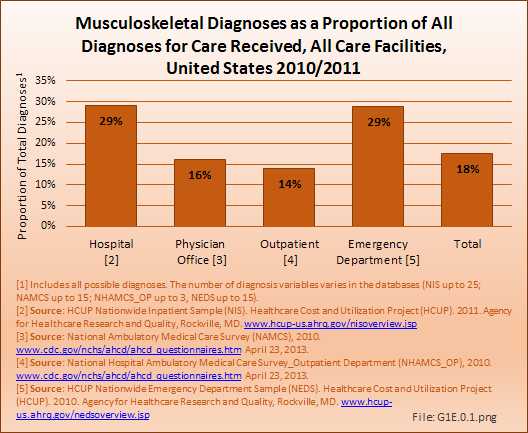
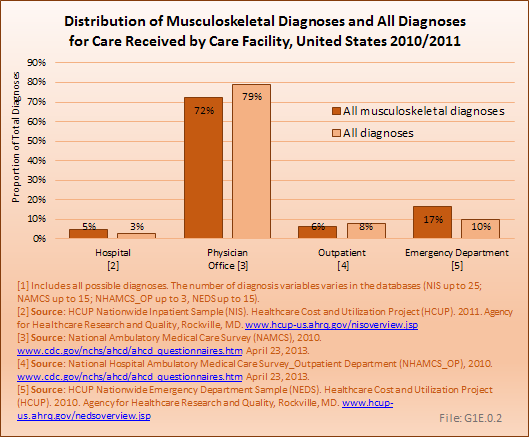
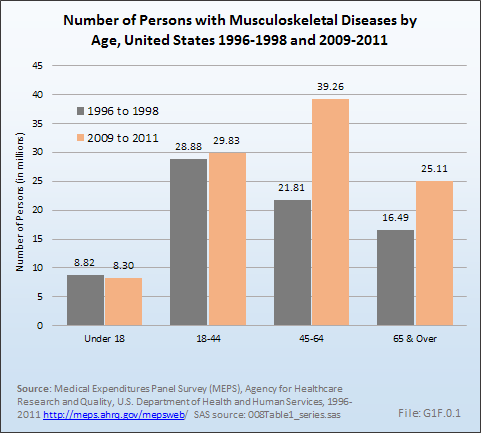
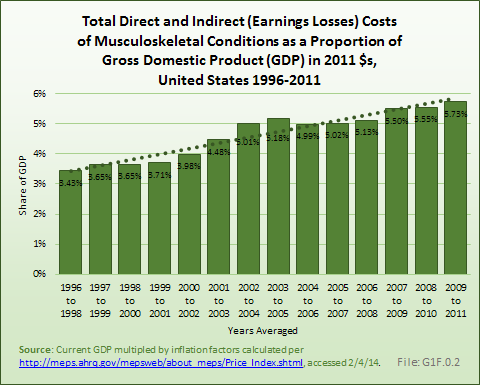
 Download as CSV
Download as CSV
